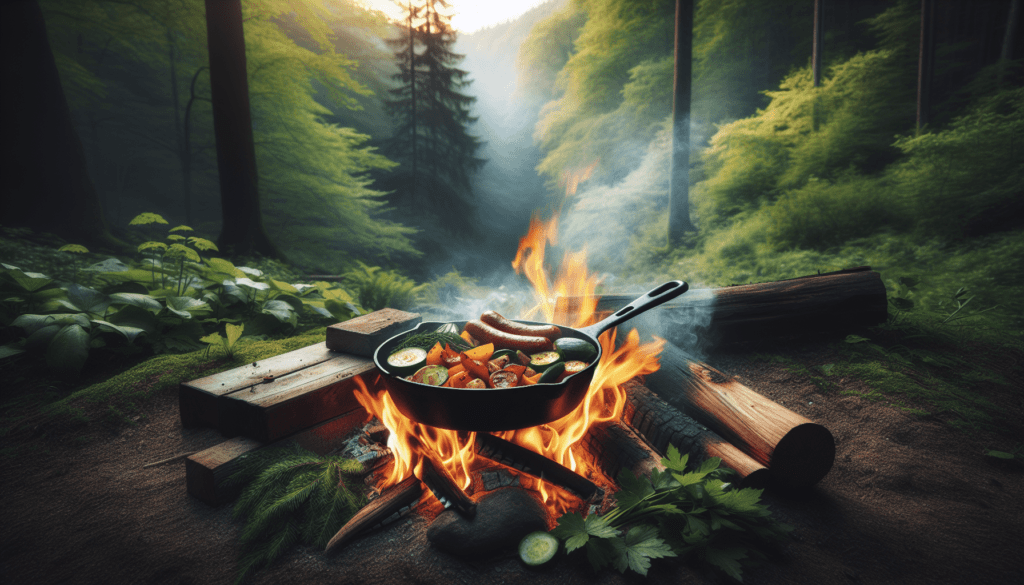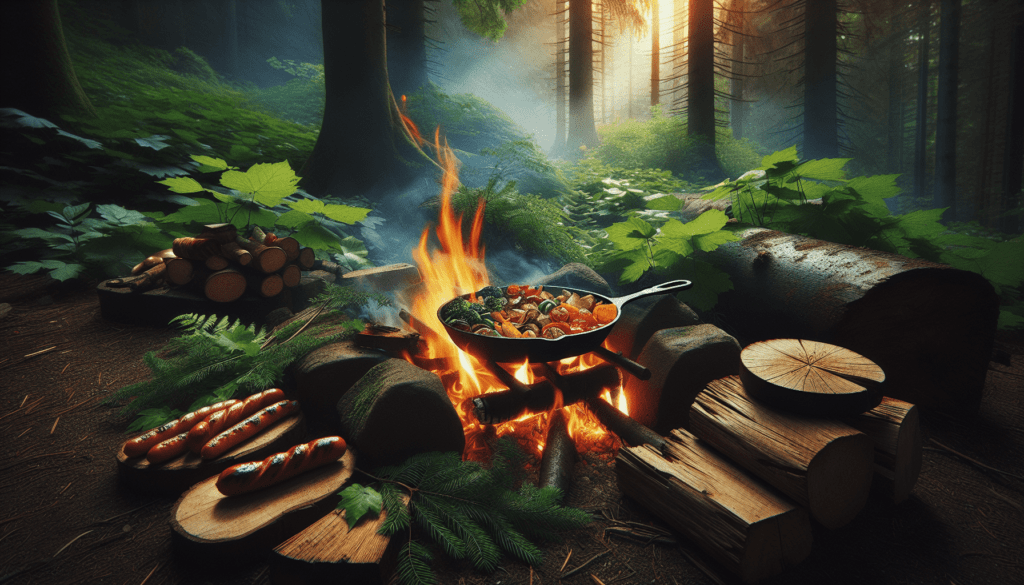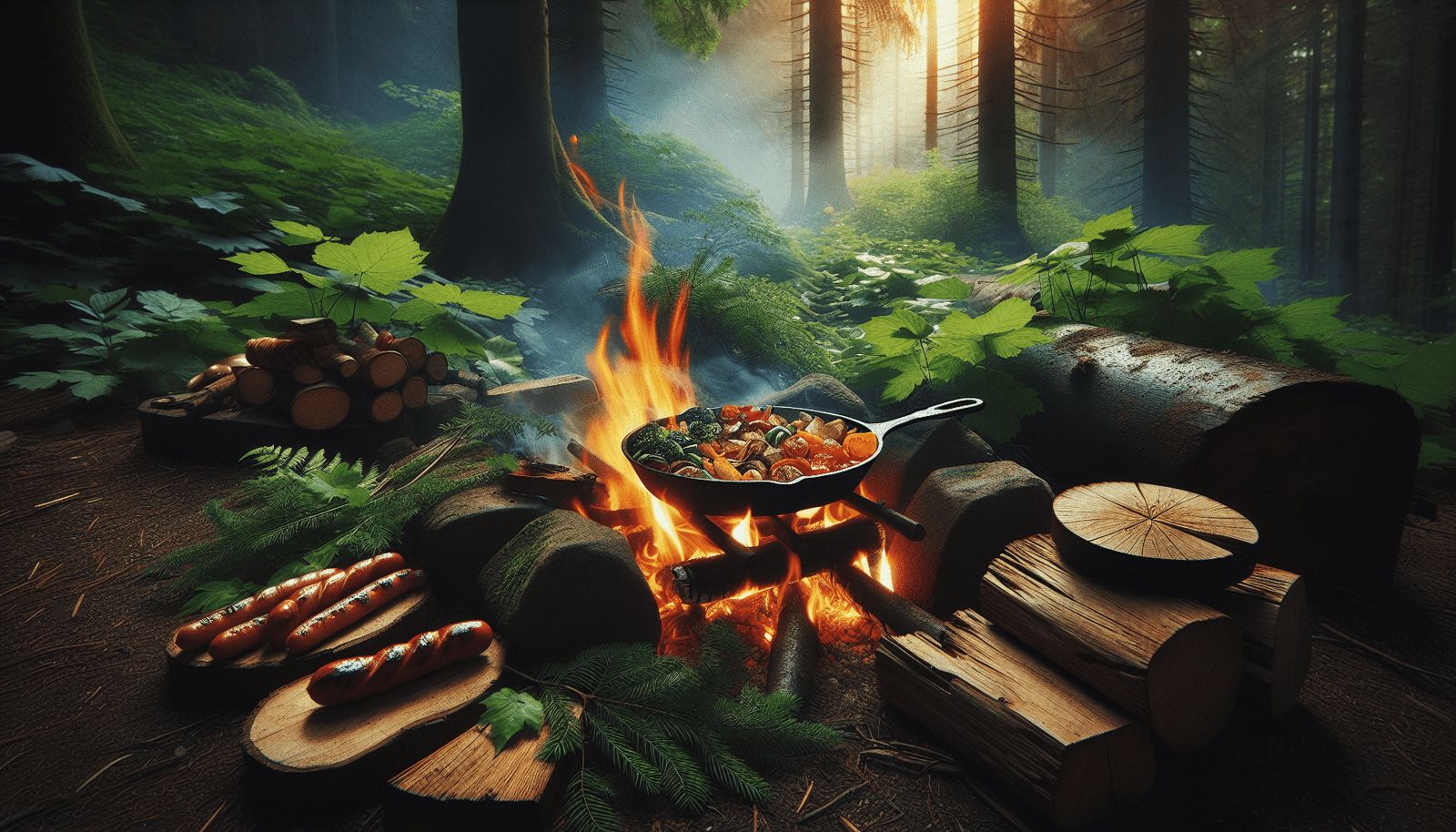Are you interested in enhancing your outdoor culinary skills but unsure where to begin? Campfire cooking can be an enjoyable and rewarding experience if you have the right guidance. With some patience, tools, and a basic understanding of techniques, you can transform simple ingredients into delicious meals even in the wilderness.
Understanding Campfire Cooking
To get started, it is essential to understand the fundamentals of campfire cooking. Unlike kitchen cooking, campfire cooking requires patience, a willingness to experiment, and an understanding of how fire and heat work in an outdoor environment.
Choosing the Right Firewood
The type of firewood you use can greatly impact your cooking experience. Hardwoods like oak, hickory, and maple are ideal as they burn longer and provide a consistent heat source. Avoid using softwoods like pine, which burn quickly and can leave a residue that may affect the flavor of your food.
Building the Ideal Campfire
Constructing a well-structured campfire is fundamental to successful campfire cooking. Start by collecting enough firewood, tinder, and kindling. Arrange your firewood into a teepee or log cabin shape, ensuring adequate airflow for better combustion.
Managing Heat and Cooking Zones
Creating different cooking zones with varying heat levels is crucial for well-balanced cooking. You’ll need a hot zone for boiling and searing and a cooler area for simmering and warming.
| Cooking Zone | Temperature | Ideal For |
|---|---|---|
| Hot Zone | High | Boiling water, searing meats |
| Medium Zone | Medium | Roasting, cooking vegetables |
| Cool Zone | Low | Simmering, warming |
Safety Precautions
Safety should always be your priority. Maintain a safe distance from your campfire, keep a bucket of water or sand nearby, and never leave the fire unattended. Ensure that you extinguish the fire completely before leaving your campsite.
Essential Cooking Gear
Investing in the right campfire cooking gear will simplify the process. While you don’t need to purchase everything at once, a few essential items can make your cooking experience more manageable.
Cast Iron Cookware
Cast iron is highly recommended for campfire cooking due to its durability and even heat distribution. Common items include cast iron skillets, Dutch ovens, and griddles. These pieces can handle high temperatures and are ideal for various cooking methods like frying, baking, and roasting.
Cooking Tools and Utensils
Having a reliable set of cooking tools is essential for campfire cooking. Tools such as long-handled tongs, spatulas, and cooking forks can help you manage your food safely over the fire. A sturdy pair of heat-resistant gloves is also highly recommended.
Grill Grates and Tripods
A portable grill grate can be laid over the fire for grilling meats and vegetables directly. Tripods can hold pots or kettles over the fire, allowing for more versatile cooking options.

Cooking Techniques
Learning some basic cooking techniques will significantly enhance your campfire cooking experience. Each technique has its unique uses and can be applied to various types of food.
Grilling
Grilling over an open flame is one of the most straightforward methods for campfire cooking. Place your food directly on a portable grill grate over the hot zone. This technique is ideal for items like burgers, steaks, and vegetables.
Roasting
Roasting involves cooking food on a spit or skewer over an open flame. It’s a simple and efficient way to cook foods like marshmallows, hot dogs, and corn. Rotate your food regularly to ensure even cooking.
Boiling and Simmering
Using a sturdy pot or kettle, you can boil water for drinks and soups or simmer stews and sauces. Keep the pot in the medium or cool zone to avoid burning your food.
Baking
Baking over a campfire requires a Dutch oven with a lid. You can bake items like bread, muffins, and desserts by placing hot coals on the lid to create an oven-like environment.
Simple and Delicious Recipes
Starting with simple recipes will help you build confidence in your campfire cooking skills. Here are some beginner-friendly recipes to get you started.
Classic Campfire Breakfast: Bacon and Eggs
Ingredients:
- 4 strips of bacon
- 4 eggs
- Salt and pepper to taste
Instructions:
- Place a cast-iron skillet on the hot zone of the fire.
- Cook the bacon until crispy and set aside.
- In the same skillet, crack the eggs and cook until the whites are set.
- Season with salt and pepper and serve with the crispy bacon.
Foil Packet Vegetables
Ingredients:
- 1 bell pepper, chopped
- 1 zucchini, sliced
- 1 red onion, chopped
- Olive oil
- Salt and pepper to taste
Instructions:
- Lay out a large piece of aluminum foil.
- Place the vegetables in the center and drizzle with olive oil.
- Season with salt and pepper and fold the foil into a packet.
- Place the packet on the medium zone of the fire for 15-20 minutes, turning occasionally.
Dutch Oven Chicken Stew
Ingredients:
- 2 boneless, skinless chicken breasts, cubed
- 2 carrots, chopped
- 2 potatoes, diced
- 1 onion, chopped
- 2 cups chicken broth
- 1 teaspoon salt
- 1/2 teaspoon pepper
Instructions:
- Place a Dutch oven in the medium zone of the fire.
- Add all the ingredients to the Dutch oven.
- Cover with the lid and place some hot coals on top.
- Cook for about 45 minutes, stirring occasionally, until the chicken is fully cooked and the vegetables are tender.

Maintaining Your Equipment
Proper maintenance of your campfire cooking equipment extends its lifespan and ensures better performance. Cast iron cookware requires special care, while other tools need regular cleaning.
Cleaning Cast Iron Cookware
Avoid using soap on your cast iron cookware, as it can strip away the seasoning. Instead, use hot water and a stiff brush to clean it after each use. Dry it thoroughly and apply a thin layer of oil to prevent rusting.
Storing Your Equipment
Store your cooking tools and utensils in a dry place. Keep your cast iron cookware seasoned and covered to avoid moisture and dust buildup.
Regular Inspection
Regularly inspect your gear for any signs of wear and tear. Replace any defective items to avoid any mishaps during your campfire cooking adventures.
Tips for Success
A few practical tips can go a long way in making your campfire cooking experience smoother and more enjoyable.
Plan Ahead
Make a meal plan and prepare as many ingredients as possible beforehand. Pre-chopped vegetables, marinated meats, and pre-measured spices save time and effort at the campsite.
Start Small
Begin with simple recipes and techniques you’re comfortable with. Mastering basic skills will build your confidence to tackle more complex meals.
Stay Patient
Campfire cooking is slower than indoor cooking, requiring more attention and patience. Enjoy the process and don’t rush it, as a well-prepared meal is worth the wait.
Experiment
Don’t hesitate to try new recipes and techniques. Experimentation is part of the outdoor cooking experience and can lead to delightful culinary discoveries.
Frequently Asked Questions
How Do You Control the Heat of a Campfire?
Control the heat by adjusting the firewood and managing the hot and cool zones. Adding logs increases the heat, while spreading the coals or moving the food to a cooler area can reduce it.
Can I Use Regular Kitchen Utensils for Campfire Cooking?
While you can use regular kitchen utensils, specialized campfire cooking tools are more durable and safer for handling high temperatures and open flames.
What Foods Are Best for Campfire Cooking?
Foods that cook quickly and are easy to handle are best for campfire cooking. Options like meats, vegetables, and simple doughs work well.
How Do I Put Out a Campfire Safely?
Extinguish the fire by pouring water over the flames and stirring the ashes until they are cool to the touch. Ensure there are no remaining embers before leaving the site.
Conclusion
Campfire cooking offers a fulfilling and unique way to prepare meals in the great outdoors, providing both a challenge and a reward for those willing to learn. By understanding the basics, using the right equipment, and practicing various techniques, you can enjoy delicious, freshly-cooked meals no matter where you are. With preparation, patience, and a bit of creativity, you’ll find that cooking over a campfire can be as enjoyable as it is tasty.
Support us! Wilderness gear Pro may earn a small commission from affiliate links in this article. Learn More


